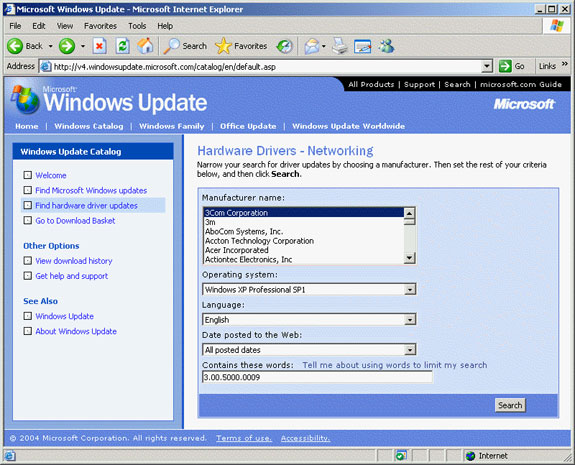

- Windows update catalog add on how to#
- Windows update catalog add on Patch#
- Windows update catalog add on windows 7#
- Windows update catalog add on download#
On the Language Selection tab, choose all Languages that apply to your environment, click Next. Windows update catalog add on download#
On the Download Location, choose your source and press Next.Browse to choose your Deployment Package, click Next.
 Right click your update in question and click Download. However, a quick high level recap for our use case.
Right click your update in question and click Download. However, a quick high level recap for our use case. Windows update catalog add on Patch#
I will not be going over the whole detailed patch process because it is covered in our SCCM Software Update Management Guide.
Windows update catalog add on how to#
Recapping how to add in to your package and deployment Voilà! Your update is now available in the console.< Use the search bar to type in the KB number.
When completed, simply refresh your view of All Software Updates. You are looking for a message saying Done synchronizing SMS with WSUS Server. You can wait a few minutes for the synchronization to complete, or browse to your log folders Program Files\Microsoft Configuration Manager\Logs and open wsyncmgr.log. On the Run Synchronization window, click Yes. Make sure you are in Software Library and click on Overview > Software Updates > All Software Updates and finally click on Synchronize Software Updates in the ribbon atop your console. Wait for the import to be completed and press Close. Confirm your choice in your basket and finally, click on Import. Windows update catalog add on windows 7#
In my example, I only needed it for Windows 7 圆4, so that’s the one I added.
Click on Add for every patch you wish to add to WSUS. This should hopefully give you the required search results for the hotfix number you searched for. Type in the hotfix number in the search field and click on Search. This should open up your web browser and load up the Microsoft Update Catalog. From there, on the right hand side of the console, click Import Updates. First step, you should open your WSUS console. In the spirit of continuity, let’s keep the ball rolling with that update. So, for my last article, I was using KB3125574. The whole process is quite easy and pretty straightforward. One reader, Dave, had a very good proposition that inspired the idea of doing this post and show you an easy way to add such updates in your WSUS database. I published a post last week entitled How to add Latest Windows 7 Convenience Update in a SCCM Image. Have you ever ran into a software update that wasn’t available in WSUS, but lo and behold, a quick internet search and you are able to manually download it via the Microsoft Update Catalog? I have. Wait for the sync to finish (see wsyncmgr.log for details) and you will find the newly downloaded updates within the SCCM console and perform the standard deployment steps.For this post, we will be looking into how to use SCCM to add Microsoft Update Catalog into WSUS Server. 
When it has finished, open the SCCM Console -> Software Library -> Software Updates -> Synchronize Software Updates. WSUS will now download the chosen updates.

When you have added all updates you need, click the basket … When the Microsoft update catalogue opens, enter the KB number you need, click “search” and add the required patches to your basket.On the right hand side, under Actions, click Import Updates.Again, one of these days when Microsoft released a patch for a critical vulnerability which has already been exploited but the patch is offered only via Microsoft Update Catalogue and not via Windows Update/WSUS.Īdding these updates to the existing emergency update process in SCCM could be so easy … but Microsoft simply denies it.īut hey, a little investigation showed: it’s actually not that bad!








 0 kommentar(er)
0 kommentar(er)
